If you want to start a really long — and almost certainly contentious — conversation among digital marketers, just mention link building.
If you do, you’ll no doubt find these people divided into two camps. There will be those who tell you that link building is still critical in 2021 and those who tell you that link building is deader than the proverbial dodo. So...who’s right?
“They say that there’s only one thing worse than being talked about, and that’s not being talked about. As an SEO consultant, I work within a fairly small, niche industry, so word-of-mouth is hugely important. While I value links from high-quality people, I seek out brand mentions as these are the holy grail for my business.”
Lukasz Zelezny, international SEO consultant at SEO.London
While there’s no doubt that gaining great, high-quality links can be useful, it’s also clear that the world — and the internet — is changing. In the not-too-distant past, dummy websites containing nothing but links littered the internet. There was nothing we could do to stop them from getting away with it until, that is, Jagger came along.
No, not the guy with the lips and hips, but Google’s rock star update which, from September 2005 on, would spoil the fun for those committing linkage crimes. The Jagger update analyzed the anchor text of an inbound link, the content on the linking page, and the speed at which links were coming from the page. This innovation forced "link farms" to remove their sketchy websites if they wanted to avoid a Google penalty.
From that moment on, quality link building became a major marketing strategy for businesses and individuals alike. Everyone began to understand the huge benefits.
Because time stops for no man — and neither does Google — the slightly jaded Jagger was unseated in 2016 by the real-time rollout of the Penguin update. Penguin prevented the kind of spammy linking that annoyed everyone. It was closely followed by the revolutionary PageRank Updated, yet another Google initiative designed to stop the bad guys in their tracks.
That was then, this is now.
After a tumultuous year, we now have our feet firmly planted in 2021 and, once again, link building is a big part of the conversation.
We’ve all been taught to follow a simple formula when assessing the value of internet content.
- Links = Trust.
- Lack of links = Lack of trust.
Although this formula may have been relevant in the recent past, the internet is changing.
These days, rather than merely a collection of pages and links, the internet is becoming a vast ecosystem with multiple ways of reaching out and communicating. Because of this, many feel that links are falling out of favor and that unlinked brand mentions are the way forward when it comes to boosting SERP presence.
“Building relationships is an important part of my business and, because of this, I work hard to collect brand mentions. Although these don’t link to my business site, they mean that my name is getting out there. Every time my name crops up, it improves my ranking and my industry profile.”
Szymon Slowik, managing director at Taka Oto Consulting SEO agency in Poland
Connecting, but without the links.
Also known as an “implied link,” a brand mention refers to those times when your brand, product, or service is referenced by another company or organization on the world wide web but — and here’s the kicker — no link to your company is included.
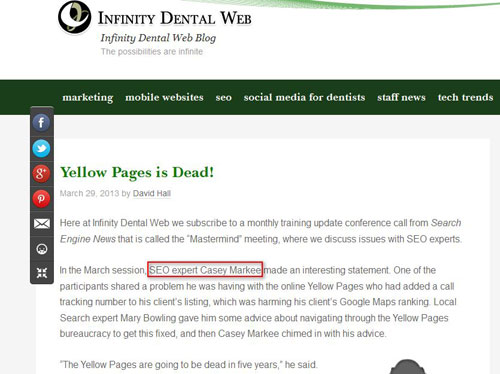
These mentions may happen within an article, blog post, or even a post on social media. This is usually done by a company that wants to present itself as high authority to Google but doesn’t want to link to your company either out of respect or simply because they don’t want their content to be full of links.
Check out how Casey Markee is mentioned as an SEO expert in this screen capture. However, the author did not link to Casey’s website or social media page. “That’s great,” I hear you sigh, “but I want endorsement which improves my ranking, so I need links.” To that, I’ll reply “Not true, and here’s why.”
Come to mention it...
We all know that Google and other search engines use links to calculate the value of a website or page and rank it accordingly. What you may not know is that these search engines do the same for brand mentions.
Both Google and Bing have confirmed this is the case. At SMX West in 2016, Bing’s Duane Forrester said, “Years ago, Bing figured out context and sentiment of tone, and how to associate mentions without a link. As the volume grows and the trustworthiness of this mention is known, you’ll get a bump in ranking as a result.”
If you need any further evidence, Google confirmed this strategy. Their Search Quality Guidelines read, in part, “For Page Quality Rating, you must also look for outside, independent reputation information about the website. When the website says one thing about itself, but reputable external sources disagree with what the website says, trust the external sources.”
Heard it through the grapevine.
It's clear that brand mentions or unlinked mentions help you get where you’re going SEO-wise. Your business can get on board by making this a solid part of your strategy. Below are five tips for getting started.
1. Track and Trace
For starters, you need to come up with a system that will allow you to track your brand mentions. You can do this a couple of ways:
- Sentiment Analysis. Sentiment analysis tools such as Brand24 collect all of your brand mentions and bundle them up with a cumulative score of negative, neutral, or positive. You also can respond and otherwise react quickly to any negative mentions which start to show up.
- Alerts. Tools such as Google Alerts serve as a great backup for sentiment analysis tools as they’ll send you an email every time your brand or product name pops up anywhere on the internet.
2. Check Reviews
You should, of course, be encouraging your customers to leave reviews of your business as a standard practice but, if not, now’s the time to start. Actively soliciting reviews and ratings can be incredibly effective in terms of brand mentions. As always, it’s a good idea to keep a consistent eye on them to spot and deal with anything that’s creeping into negative territory.
3. Get Social
It’s hard to overstate the importance of engaging with your audience on social media. These days, social media is where your customers live. It’s not enough to post advertisements once a week, either. You need to jump in with both feet and join the conversation to keep those brand mentions flowing.
An ongoing commitment to social media means talking directly with customers, responding super-fast to questions, and hosting surveys and competitions. When customers feel valued, they’re quick to tell friends and family about your products and services. Put consistent, friendly social media support at the top of your list.
4. Snoop
Your primary concern should always be the brand mentions your business is getting. However, keeping tabs on your competitors will also yield a tremendous amount of insight. Make it a part of your ongoing strategy to keep an eye trained on the mentions your competition is getting. Use those insights to compare your successes and failures against those of others.
5. Influence
Social influencers are still a thing in 2021, but the trend is toward normal, everyday people and away from celebrity endorsements. You can search around for influencers for your brand or even find them among your existing customers on social media. Happy customers make excellent brand ambassadors!
For Now, It's Best to Hang Onto Both Worlds
While there’s absolutely no doubt that brand mentions are the future in terms of SEO, this doesn’t necessarily mean that links are gone for good.
Forging strong relationships through link building can be an effective part of your digital marketing strategy and certainly shouldn’t be dismissed completely. Instead, a two-part strategy with brand mentions and links will most definitely prove to be the winning combination for 2021.
While there are many kinds of web design mistakes, a few of the most grievous ones can actually hurt your site's ranking when people search for keywords you're aiming for.
Web Design Mistakes Hurting Your SEO
Take a look at these ten big missteps and ask yourself if any of them apply to your site. Chances are that just a few minutes of code revisions can make a big difference in your SEO.
1. Not Linking to an About Us Page
When Google's crawlers follow links, they look for several generic terms that help them aggregate content. At the top of every page, include a pertinent headline and links to an About Us and Contact page. This will help Google crawl through your pages and find the content its bots need to parse everything else that's on your site.
While including other href links is of course important, Google's algorithm may not follow these with the same gusto that it does when looking for basic pages.
Web developers have hotly debated the right way to format hyperlinks, but it doesn't seem to matter as much as it used to. Google is more interested in the name than the href formatting code.
2. Neglecting to Purge Old WordPress Plugins
Google, Bing and Yandex all rate sites down if they take too long to resolve in a virtual machine they use to test sites. If your landing page doesn't meet basic web page speed requirements, then it's a fair bet that it will start to slip in the rankings. WordPress is supposed to be lightweight, but even sysadmins who rely on this platform might find that it takes more than 500ms to load a page with good hardware.
One of the biggest reasons this web design mistake occurs is either an over-reliance on plugins or neglecting to get rid of old ones that are no longer used. Head over to the WordPress admin panel and ask yourself if you really need all the ones listed.
If you see any names that you didn't install yourself, then you want to purge these as well unless they were part of a dependency package.
This same wisdom applies to those who manage their back-end development with a framework like Rails or Node.js because plugins in these environments can be just as deleterious to performance.
3. Encouraging Redirects
People used to say that encouraging an end user's browser to redirect them to another page was a good way to update links, but it's very easy to get carried away with this practice. It's a common web design mistake to encourage browser redirection. However, try to do your best to limit the number of times this happens when loading a page. Search engine bots can get stuck in a loop if they're not able to keep track of the number of redirections.
4. Hosting Bloated Image Files
Compressed image file formats exist for a reason. Huge uncompressed TIFF pictures look gorgeous, but they take forever to load. Since TIFF and other related file structures normally require a helper application to resolve in a user's browser, Google treats these as third-party downloads anyway.
Compress pictures and PDF files to reduce loading times and therefore improve search rankings. You can use lossless compression algorithms, like those employed by some versions of WebP, if you need to ensure unfettered data integrity. Now, there is certainty that around 9 out of 10 client browsers can load these pictures, so you're not sacrificing usability.
5. Deleting Your Sitemap
People don't talk about sitemaps nearly as much today as they used to. So, though you might feel like deleting that little XML chart that seems pointless, that's a huge mistake. This is because a sitemap can add links that major search engines will follow without considering them spam. Since developers essentially write sitemaps in discrete HTML or XML, they can also be important for accessibility reasons. Google sometimes considers these in the rankings of sites for those who perform certain types of public services.
6. Relying Solely on Dynamic HTML Pages
Considering that we generate so much content on the fly, it can be tempting to make almost every page dynamic. This is how web giants like YouTube essentially work, so it can seem a little unfair that this hurts web rankings. However, most people aren't running something the size of YouTube, so it's important to make sure that at least your major landing pages are all rendered in basic HTML and CSS.
7. Generating URLs Dynamically
While there is a place for dynamic URL generation, a majority of your pages shouldn't rely on it. Give your pages discrete names that make sense if at all possible. Most of the popular frameworks do allow this, so there's no real reason not to.
8. Designing Exclusively for Desktop Devices
Desktop sites take a long time to load on mobile devices, so they're inconvenient for mobile users. Search engines take mobile performance into consideration when ranking sites. Even if you do get to rank, then the probability of a bounce grows by 123 percent if it takes between 1-10 seconds to resolve a page. Use a mobile processing tool and physical hardware to check how your site loads on mobile devices.
9. Designing Exclusively for Mobile Devices
The flip side of this is true, since mobile pages don't rank well when people search for keywords from a desktop or laptop computer.
Responsive web design that senses the type of device being used and the overall resolution of the user's screen is of vital importance, especially for those attempting to launch multi-channel campaigns that are geared toward users of several different platforms.
10. Having No Way to Resolve 404 Errors
Search engines hopefully shouldn't run into a resource not found error, but if they do, you need some way to point them back to your site. Make sure that you provide at least something creative that provides links to your homepage and other important areas.
Eventually, external links might fail and search engines following these could end up running into your site's 404 page. If you took the time to link back to your homepage, then search engines will be able to discover something meaningful even from this failure condition. On top of that, there's a good chance that a user following one of these malformed external links will click one of your other ones and provide your site with some additional traffic.
What is the best word count or length for blog posts for SEO? Can you improve your blog SEO ranking with longer posts?
If you want answers to these questions, this article is exactly what the doctor has ordered. We'll share with you if length really matters and what rules you should follow when writing your next blog post to increase your rankings.
What is the optimal blog post length for SEO?
There is no point in creating blog posts that nobody can find. In fact, if you really think that there is a universal amount of words that will guarantee you high rankings, you got it all wrong. However, there are a number of studies that prove that long posts tend to rank higher when compared to short content. Researchers also found that the optimal length of SEO-friendly blog posts vary by topic and niche.
But if you’re here to get a short answer, Hubspot claims that the ideal blog post length should be around 2,100-2,400 words. Neil Patel on the other-hand suggests blog posts should vary between 1,100 and 2,700. And Backlinko claims he found the ultimate answer: 1,890 words.
According to those opinions, you can come up with the answer that the ideal blog post length is on average 2,000 words.
Here is what Google Guidelines say about the optimal length of content on your site.
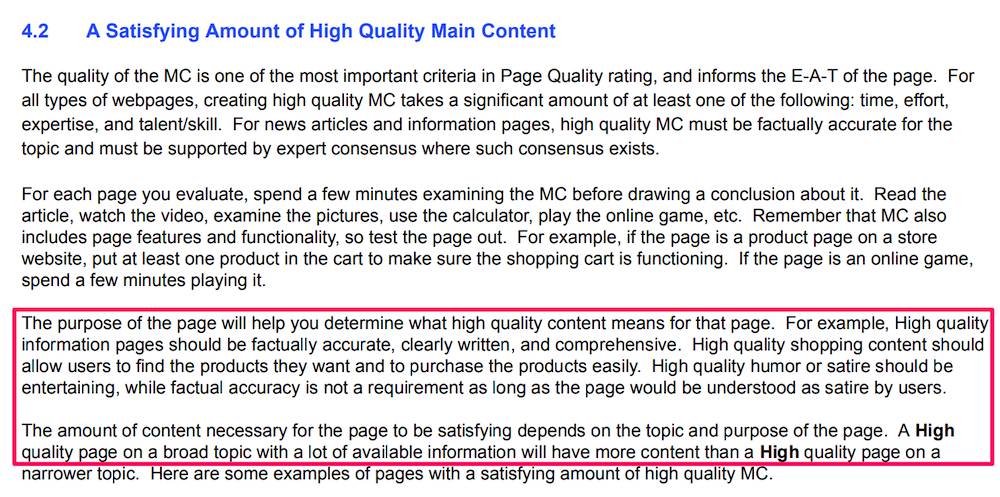
Screenshot from Google Search Quality Evaluator Guidelines
As you can see from the screenshot, there is no specific number of words. Google states: “High-quality information pages should be factually accurate, clearly written, and comprehensive. The amount of content necessary for the page to be satisfying depends on the topic and purpose of the page. A high-quality page on a broad topic with a lot of available information will have more content than a high-quality page on a narrower topic.”
Now you can be 100% sure that there are no strict requirements concerning the length of your content; it’s the quality that matters. It is a fact that if you want your page to get all the potential, you have to create unique blog posts in order to beat your competitors.
Continue reading to learn about the main factors that influence how long your posts should be for high rankings in order to have a clear understanding of the rules you have to follow to increase your chances to get that precious traffic to your website.
Things to consider when choosing the length of your next blog post
Type and purpose of the post
The type of blog post matters because the optimal length of your content will depend on the topic you’re covering.
For example, when people search for a specific answer, definition, or specific piece of information, they want quick answers. In these cases, you don't want to write a 2,000 word answer because it will only increase your bounce rates. The readers will be disappointed when they are unable to find what they're looking for quickly.
However, when you wish to share a valuable case study with your target audience, you can write something longer. When users are looking for fixes, workable techniques, or success stories, they will appreciate a long read packed with valuable insights. In this case, you should provide meaningful information in detail because this is what visitors will expect.
You have to know the type of post you’re working on in order to meet the search intent of your potential visitors.
Google's expectations
This should be the first thing to take care of before you start writing a new blog post. In order to compete with others in SERPs, you have to make sure you create content that Google prefers for a particular query.
Type in your suggested title or the keywords you want to target into Google search in to quickly analyze the type and length of posts on the first page. To check word count, copy-paste the content into any word count tool and you’re good to go.
Eventually, you will come up with certain numbers like:
1st position - 780 words
2nd position - 2145 words
3rd position - 3400 words
4th position - 2060 words
5th position - 950 words
At this point, you can see that three out of five first-page results are 2000+ words. This means that for that particular query Google prefers long-form content and you now know to write a longer piece.
Brian Dean created the term “Skyscraper Technique” and suggests you analyze what your competitors wrote in order to create longer, better content to increase your backlink opportunities.
This formula may work for some bloggers, but it is far from universal. Always keep in mind that your rankings don’t depend only on the length of the posts you’re uploading, but also on your domain authority.
From my example with SERPs analysis, you may have noticed that the 1st and the 5th positions included websites with less than 1000 words. This happens because these pages have a high domain authority, which brought them an advantage over the others because of more Google trust.
Note: The comparison technique won’t guarantee you high rankings if you write a blog post with 2000+ words, but it will give you an understanding of what Google likes. This helps you know where to start when you want to increase your chances for first positions.
Recap:
- Use Google to analyze the length of the first-page content.
- Define what user intent is in the following query.
- The average number of words for a blog post is 1,800.
- The optimal length of a post varies between 1,000 and 2,000 words and depends on your topic and niche.
- Opt for longer blog posts as they perform better in search.
- Create unique and informative content that your visitors will benefit from.
Why you should opt for longer posts
Long articles provide you with a wider capacity of symbols in order to create unique and original content. With shorter posts, it’s almost impossible to differentiate from the others as you have to come up with brief material strictly to the point. By opting for bigger lengths you can steadily increase the number of organic traffic your page is getting as well as social media attention.
Long blog posts: if you did a good job making them interesting, visitors will stick around for a while. This could potentially decrease the bounce rate from your website. Longed articles invite users to keep reading, which so incorporate additional links to other articles on your website. This will increase your user engagement and the authoritativeness of your brand.
A good informative blog attracts more visitors and can help you warm up your audience to move your leads further in the sales funnel. After conducting a decent competitive analysis, you’ll know what topics others are missing to potentially gain the advantage in SEO over them.
Lastly, in long-form articles, it’s easier to incorporate personality when explaining the topic. This will definitely keep your visitors entertained and hungry to read more.
Everyone who owns a small business or who works in marketing should know their way around the wild and ever-changing world of search-engine optimization (SEO). Once an afterthought and just a small piece of the sales/advertising puzzle, SEO has come into its own as a separate, important business discipline. Its growth in importance is based on reality. For-profit entities simply cannot thrive unless their websites appear high enough in search results to attract large numbers of visitors. Then, a decent percentage of those visitors will become customers. Eventually, some fraction of new customers will turn into long-term, loyal buyers of your products and services.
But, the first step is all about getting engine algorithms to recognize your site and its content. For example, if you sell miniature imported brass animal sculptures in a brick-and-mortar store, an SEO company will see to it that when seekers go online and hunt for information about any of those terms, they'll see your website listed on the first page of results. Preferably, it will not only be on the first page but high up on the page. There's more to SEO than that, which is why it pays to know the commandments of the discipline.
Update Regularly
Don't let your website stagnate. Visitors hate checking into a site only to discover that no new content or updates have been posted in a while. Make it a point to add new items to your main page and/or blog at least once per week, and preferably twice or three times each week. Additionally, be diligent about telling visitors how often you update. Don't leave them in the dark.
[insert page='semrush-vs-ahrefs-which-seo-tool-to-choose-and-why' display='single-related-article.php']
Hire a Competent Freelancer
Unless you specialize in all things search-engine related, leave the heavy lifting to a professional. Don't rely on your gut instincts or knowledge gained from an article you read last night. And do not fall into the trap of thinking that software will do the trick. It won't. If you hire an SEO freelancer with confidence, there will be no need for software. Allocate a set percentage of the marketing budget to pay for SEO services from a human being who has experience in the field. What can an expert do for your company?
For starters, your pages will start to rank higher. More people will visit your site and read blog articles listed there. Make sure you have good content for them to look at, and after that, your sales should begin to rise, slowly but surely. A talented SEO freelancer is a profit center. Rarely will there be a month in which expense will exceed income. But, don't expect miracles. Even the best of the best pros needs a few weeks to prove their worth.
Use Excellent Links
Be careful not to use broken, outdated, or irrelevant links in content. The whole point of adding a link is so readers will click it. It they hit a dead end, a 404, or an old piece of content, chances are they'll never come back.
Post Interesting, Useful Content
The internet is a sea of words. Most of what is posted is either outdated, duplicated from other sources, based on incorrect information, or boring. Don't let your creations fall into any of those categories. Always take the time, or pay someone else to take the time, to create pieces that deliver value. That means every article posted on your site or as a guest on someone else's should offer worthwhile information to anyone who reads it.
[insert page='ideal-word-count-for-seo-fact-or-myth' display='single-related-article-02.php']
Avoid Overused Keywords & Stuffing
There are plenty of free keyword tools that will show you exactly how many people are using a given term. Avoid keywords that are overused. Especially as a new company, you're apt to drown in a sea of larger competitors who can afford to post on high-authority sites and beat you to the top every time. Don't stuff keywords into articles. Modern versions of algorithms can detect stuffing. Not only will you miss out on a high ranking, but stuffing might lead to penalties and exceptionally low rankings.
Understand the Power of Speed
Check the speed of your site regularly. Users get frustrated when the click on a website and are forced to wait for graphics and other complex content to load. At least twice per week, see how quickly visitors can get into your website.
One of the hardest-hit sectors during the COVID-19 pandemic has been nonprofits. Due to many nonprofits’ reliance on in-person events to do a majority of their fundraising, and with large gatherings not being allowed in many states, nonprofits need to find other means to raise money and build awareness. Luckily, nonprofits have a secret weapon that even they may not always know about.
Search engine optimization.
While SEO has been utilized throughout the for-profit industry for over 20 years, many nonprofits have not utilized the ability to get found in search.
That’s a huge missed opportunity.
If you find that your nonprofit is in this boat, here are 6 ways your nonprofit can begin optimizing your site to gain higher rankings, build more awareness, and increase funding.
1. Position yourself as a thought leader for the problem you solve
Audiences who want to learn more about a specific issue in their community or the world turn to search engines for answers. If you have great pieces of content that address this issue, you are far more likely to be found in search engines than if you simply have a brochure-ware site that only focuses on your organization.
By creating this issue-based content, you’re going to get the right audiences to your site and increase the likelihood of getting donations.
2. Identify the keywords that matter
When creating new content, it’s important to understand what your content is truly about. What specific query would someone search for to find your content? Is this keyword the same keyword you use in your content? This is where keyword research comes into play. Identify the keywords that best describe what your nonprofit does and the problems it solves. Look for keywords that fit your audience but also have a high enough search volume that they are worth your time.
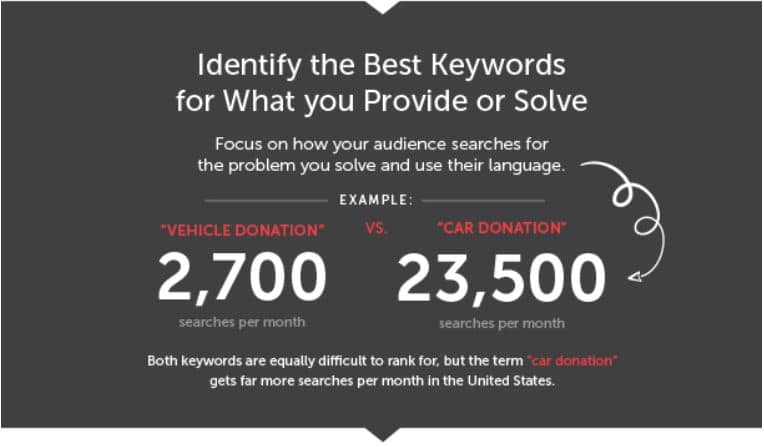
From 919 Marketing’s Nonprofit SEO Guide.
In the example above, it makes more sense to focus on “car donation” than “vehicle donation” due to it having nearly 9x the search volume. In this example, we’re also assuming that both of these keywords have similar organic difficulty - a measure of how hard it is to rank organically for a specific keyword.
3. Transform stories into inbound articles
As a nonprofit, one of your biggest assets is the stories you can tell about how you are making an impact in the world. By combining this information with keyword targeting above, you can utilize keywords people are searching for and incorporate them into your stories.
For example, one of the highest-ranking pieces of content for the query “clean drinking water in Africa” is this story by The Water Project. By focusing even a bit on SEO, they are able to rank highly for this search term and gain new audiences.
4. Make sure your on-page SEO is on-point
Creating great content that engages audiences is only half of the battle. The other half is to get search engines to notice. This requires some technical guidance to make sure your on-page content is optimized for search.
Some of the most important aspects to remember:
- Utilize your main keyword in your meta title and header (H1, H2, H3, etc.) tags
- Create a meta description that sells your content to potential audiences - it’s your elevator pitch in search results
- Make sure your images have the appropriate alt text
- Make sure your content loads quickly - Google loves a fast site
- Break up your content into chunks so it’s easier for users and Google to navigate
5. Get .edu and .gov links when you can
Getting inbound links from authoritative sites is still a major ranking factor in Google searches. Nonprofits often have an ace up their sleeve when it comes to getting authoritative links, as many are already working with schools or governmental agencies - which, in most cases, have high Domain Authorities. Simply asking for a link back to your nonprofit’s website from these organizations can result in a major boost for your site’s link profile, which will help all of your content in search rankings.
6. Don’t limit yourself to regular search engines
Google is obviously the largest search engine in the world.
Do you know what’s #2?
Not Bing.
Nor Yahoo!
Nor Facebook.
YouTube.
YouTube is the second biggest search engine in the world and is an amazing vehicle for nonprofits to reach potential audiences and share stories and their impact on the world. If you’re creating any videos, make sure that you are posting them on YouTube and optimizing them there as well. That extra exposure will help drive the development and awareness of your cause than simple blog posts sometimes can’t completely convey.
But wait, there’s more!
Our friends over at 919 Marketing made a great nonprofit SEO infographic as well with even more tips and tricks for nonprofits. 
Shopping local has gained nationwide popularity among the wildfire of modern corporation criticisms. To herd these eco-conscious and community-oriented shoppers in the direction of your business, you’ll need to invest in your local SEO strategy.
Every day, consumers look for local businesses that fulfill their shopping needs and appeal to their desire for ethically-sourced goods. As your mom-and-pop shop strives to boost profits, you’ll need to reassess your local SEO strategy. Neglecting this facet of your SEO strategy could lead to financial difficulties or even business closures.
In the wake of COVID-19 restrictions, nearly everyone relies on the Internet to get their shopping done. To respond to this spike in online shopping appropriately, local business owners need to increase their online visibility if they want to remain competitive, gain profitability, and develop their brand. Companies that optimize their website for local organic searches increase their chances of being discovered online by aimless potential customers.
To increase your conversion rate, you’ll need to understand why local SEO matters. For those business owners on the fence about funneling time and resources into their local SEO strategy, you should consider taking a second look at its benefits.
Critical factors in local SEO
Proximity, relevance, and prominence are vital for a high local SEO rank. Unfortunately, as a business owner, you don’t have a lot of control over your business’ proximity unless you can open more stores in your customers’ locations. Small businesses without a physical location should strive to maintain sustainable growth, expand their service area, and gather current information on their G.M.B. listing.
Extending your organic reach and improving your brand’s reputation is key to a company’s growth. To accomplish these goals, improving your local SEO is critical. When developing your local SEO strategy, note that your services and products’ quality and popularity will determine your business’s relevance. Those business owners hoping to become leaders in their industry should always be on the lookout for backlink opportunities to local and industry publications and other companies that provide complimentary services and products.
When refining your local SEO strategy, it’s similarly vital to partner with an SEO company like Searchbloom.
For example, these analysts will help you collect inbound links that can better establish your authority by letting search engines know that you’re running a credible business worth linking to. Technology plays a massive role in local SEO, as it ensures that you have a superior website with swift load times, high user data security, and mobile device responsiveness.
[insert page='semrush-vs-ahrefs-which-seo-tool-to-choose-and-why' display='single-related-article.php']
What to prioritize for local SEO
Local SEO is a fundamental aspect of improving sales and forming customer connections. Unfortunately, it lies beyond the scope of many entrepreneurs. Fortunately, there are certain areas you can focus on to boost your local SEO ranking.
Content
Generating creative, engaging, and useful content that consumers would enjoy and share will increase your brand recognition. You can develop a strategy to write and upload articles discussing your products and services with embedded local keywords. These keywords will drive traffic to your website and improve your chances of securing a sale. Through content marketing efforts, you can score natural backlinks, which will eventually translate to more traffic.
Social media
Posting regularly on social media platforms can spark traffic-boosting conversations, help businesses acquire new customers, and improve overall brand awareness. Therefore, in the interest of increasing your local SEO ranking, you should generate relevant video, written, or photo content. Despite popular misconceptions, focusing on quality over quantity will yield better results.
Having an account on Facebook, Twitter, LinkedIn, Google+ plays a pivotal role in search engine optimization. When you engage your audience, more people talk about your business. When potential and current customers discuss your products and services online, your social media profiles will start to pop up when consumers search for your business.
Generally speaking, a customer will usually conduct online research before they purchase a product or service. If your followers actively engage with your posts on social media, you may rank higher in the local search results, leading to more online and offline sales. Social media is also an excellent tool to nurture relationships with existing customers while winning over new clients.
On-page SEO
If you want to achieve desirable local SEO results, don’t underestimate the power of on-page SEO. Ensure that you optimize your alt text, titles, and descriptions to match the local search intent with queries. Besides optimization, make sure you research and find keywords used by local consumers to locate products and businesses. Additionally, tailor-make your keywords to match the location to increase a consumer’s likelihood of finding your website.
[insert page='7-boring-seo-tasks-that-can-be-automated-to-save-you-time' display='single-related-article-02.php']
Why mobile is key to local SEO
Considering that many people use mobile devices to perform online searches, focusing on local search optimization won’t suffice. You’ll also need to optimize for mobile viewing. Most of the customers that belong to your target market own a mobile device, so it’s in your best interest to dedicate a considerable chunk of your local SEO budget to mobile optimization.
Although people still use desktop computers at home, the whopping majority of working professionals spend most of their day away from their home computers. To stay connected with loved ones, colleagues, and potential clients, they carry smartphones or tablets wherever they go. Therefore, if someone wants to find a service or product, they’ll likely use their mobile devices to perform the online search and find relevant businesses.
Conclusion
Through local SEO, you can lower your marketing expenses and dominate organic searches. If done correctly, it can help your business thrive in the industry and outrank your competitors.
Being visible online is now crucial for every business. No matter if you only work locally or sell goods worldwide, you need to stand out in the crowd of competitors. You need to reap the beneficial results of content marketing. For this reason, many companies invest in effective SEO services performed by experienced and skillful professionals for their marketing efforts.
A skilled marketer or PR agency uses many techniques when building a marketing strategy. Some strategies are applied to the website itself. These typically involve combing through Google Analytics, conducting a content audit, overhauling blog posts, and optimizing all existing content for crawling by a search engine.
Others are performed off-site to achieve the impressive results of content marketing in the digital age. Among the off-site methods, there are two that are usually considered to be the most significant: digital PR and content marketing. Thanks to them, you can improve brand awareness, reach a wider audience through enhanced content distribution, and appeal to a potential customer by providing more engaging content that addresses the felt needs of your target audience.
Most companies profit considerably from a combination of social media marketing, PR efforts, media placements, publishing a white paper, media placements, journalist relationships, and more.
Additionally, those strategies can have both short-term and long-term effects on your business. Read on if you'd like to find out more about creating B2B content, how B2C marketers leverage relevant content as part of a comprehensive content marketing campaign, and why inbound marketing is beginning to eclipse more traditional marketing practices.
Digital PR
As the Digital Marketing Institute explains, "Digital PR includes a wide variety of marketing possibilities such as being interviewed by online publications, increasing your online presence, and using the interactive power of social media for further growth and recognition."
Digital PR is similar to traditional PR, focused on networking with journalists. The big idea in the content marketing world is to encourage them to feature a particular brand in magazines, newspapers, radio, and television. Consequently, digital public relations specialists search for coverage with articles on online news sources and websites or on social media and blog posts.
Digital PR Tactics
Nowadays, many digital PR tactics are used to improve a company's visibility on the internet. These include:
- business profiling via sharing B2B content;
- developing relationships with bloggers, B2B content marketers, B2C marketers, and online journalists to get press coverage;
- creating online press releases and soliciting other forms of media coverage;
- arranging online reviews and interviews on a targeted media outlet;
- blogger outreach and influencer marketing aimed at being more visible on blogs and social media profiles;
- posting online content to improve reputation, brand mentions, and receive valuable backlinks; and
- ensuring that press releases are well-optimized with high-quality links leading to your website to boost your search rankings.
Short-Term and Long-Term Benefits of Digital PR
Digital PR provides a business with many short-term and long-term benefits. However, to track its performance, an expert content marketer or full-fledged PR firm will recommend you set the goals for your campaign before you start it.
Some results that can help inform your goals and content marketing efforts might be as follows.
Improving Website Traffic
If many people read about your company as you share your branded content on Facebook, Twitter, or other social media, you are likely to get more visitors to your website. As a result, every point of contact with valuable content represents a chance to enhance your company's brand awareness (and profits) through content promotion.
Enhancing SEO and Rankings
As your business engages in content creation and gets mentioned on high-authority websites and in other B2B content marketing, it allows you to receive valuable links that work excellently for SEO. Consequently, when Google rates your site higher, it can rank higher for keywords associated with your industry. As a result, the savvy B2B marketer knows that you will get more traffic in this way as well.
Boosting Sales
One of the most significant benefits of any public relations practice is increasing sales. Therefore, when a company sees ROI from their online marketing investment, they know it is a crucial sign. It shows that all the marketing efforts were worth it and eventually paid off. Keep this in mind as you establish your marketing budget!
Generating Leads
Thanks to an excellent digital PR strategy, your great content will reach a relevant audience that's interested in your services or products. As a result, the more people that read about your offer and click through to your website, the more potentially valuable leads you will get.
Building a Trustworthy Brand
Similar to traditional PR, this digital counterpart aims at gaining your client's trust. Thanks to a lot of positive references online, your brand will definitely grow its reputation. Additionally, if your content creation efforts consistently yield an excellent blog post adapted to SEO standards, search engines perceive your website as a reliable source of information.
Content Marketing
You may think that content marketing is an on-page SEO tactic, focused on creating and publishing content on your company's website. However, in fact, this term is much broader. Instead, it involves both on-page and off-page methods. The successful marketing team typically uses a combination of email marketing, blog content, Google Ads, video content, and more to help boost their content marketing ROI.
Obviously, these days content creation means a lot more than firing off a random blog post every now and then. Yes, it's vital to create quality content on your site to increase your brand awareness. However, you should also remember to provide excellent, engaging assets to maximize the results of content marketing. (Seek to publish these authoritative resources elsewhere, too.)
Content Marketing Strategies
The most common practices used by content marketers are as follows:
- infographics;
- guest blog posts;
- eBooks;
- whitepapers;
- research papers;
- surveys; and
- case studies.
Experienced B2C marketers closely associate any content marketing effort with PR, link-building, and social media. As a result, these all become part of a successful content strategy and contribute powerfully to the process of building a reliable brand. Consequently, content creation and a healthy marketing budget represent twin necessities for taking your business to the next level.
Short-Term and Long-Term Benefits of Content Marketing
Social media is quite ubiquitous nowadays. Consumers are starting to expect unique and interesting content on various channels from every company. Consequently, any PR pro will tell you that it's worth following this trend as part of your overall content strategy and marketing efforts.
Whether you work with an agency or have your own in-house PR person, great content marketing can provide you with many short-term and long-term benefits.
Increased Reach
With content marketing, you can be wherever your customers are likely to appear. Your PR content can answer comments on social media, point them to a blog post or press release, or respond to questions on forums. You do not have to limit yourself to creating content for your website only.
Higher Authority and Credibility
Creating a lot of reliable content shows your company's expertise in the industry. In this way, you can appear as a credible provider who really knows a lot in their field. You can do it through publishing, for example, case studies, webinars, downloadable resources, or blog posts. This is what many PR professionals mean when they use the term inbound marketing.
Boosted Website Traffic
Similar to digital PR, content marketing sources can significantly improve your website traffic. This is because relevant and useful content (among other PR activities) will encourage your audience to come back to your website for compelling content and more.
Retargeted Audience
When you analyze your content's performance, you will gain the data necessary to retarget your audience. Content marketing success means providing them with the information they need. After taking a look at the users who viewed your content, you will know which display ads to retain in your content strategy to maximize the chances of making a profit.
Wrapping Up
Both digital PR and content marketing can provide your business with a lot of benefits. The obvious results of PR and content marketing are both obvious and quantifiable. Consequently, it's well worth combining them as part of your content marketing strategy. And yet, according to the Content Marketing Institute, more than half of businesses reported that their company had yet to put together an integrated digital marketing strategy.
Don't let your business become a content marketing statistic! Taking care of public relations and building a positive brand image has never been more crucial. As a result, numerous companies are fighting for the same audience, employing content marketers to help grab eyeballs online. You should do your utmost to stand out and attract them to your product or service. If you haven't done so already, start putting together a marketing budget and a content marketing strategy.
Thanks to content marketing and digital PR, your website will rank higher in search results. As a result, you will get more website traffic as just one of many results of content marketing. Additionally, your business will appear more relevant and trustworthy.
A content marketing strategy is vital as many people nowadays are exceedingly wary of online fraud. Therefore, investing your resources in PR and content marketing and leveraging off-site SEO techniques can really pay off.
Did you know PDF files can also generate traffic for your website?
When optimized for search engines, the documents you upload can be just as interesting for crawlers as they are for your audience. Regardless of the type of documents you upload (presentations, guidelines, reports, eBooks, whitepapers, and more), there is a chance they can make a difference in your SEO ratings.
And, since PDF is the most popular format of online documents, we’ll break this optimization process down into a few, easy to follow, steps.
#1: Content Structure is Important
You wouldn’t just slap text on a web page and hope for the best, would you?
The same is true for documents (regardless of format). In order to make them as user-friendly and readable as possible, you must use an SEO-friendly content structure. This means headings, lists, short paragraphs, images, spaces, inner links (if the document is long), table of contents, and so on.
A quick tip: If the document is already saved as PDF you can use a PDF to Word converter and edit the content in a more familiar environment.
#2: A SEO-friendly File Name, Title, & Meta Description
Just like with web pages, PDFs can benefit from keyword research and SEO-friendly titles & file names. This way, when the name of the file is displayed by search results, viewers looking for the keywords will be tempted to click on it.
In addition, make sure to keep it short and meaningful, so viewers can see the entire title and description. For instance, a guide on how to optimize PDFs for search engines may be named “how-to-optimize-PDFs-for-search” (the hyphen symbolizes spaces in Google talk).
Of course, the title should follow the same rule, but it can be a bit more comprehensive. The same goes for the meta description, which should provide viewers with a brief content summary.
Where do titles and meta go in a PDF file?
Since documents are only uploaded on the web server, you can’t specify these details using HTML (as you would for a regular page). This is why you have to do this a bit differently.
Start by opening the document with a PDF reader (like Adobe). Go to File -> Document Properties. In the window that opens, fill in the Title and Subject fields with the title and meta description.
#3: Use Links
Many site owners use PDFs as an incentive for people who subscribe to their newsletter or as a way to start a discussion. But you can also include them in your content marketing strategy by linking to them and from them (internal linking).
Treat any PDF file as a regular page of your site and make sure to highlight its importance by including links to the most relevant pages and linking those pages to the file.
[insert page='which-is-better-for-your-website-content-or-backlinks' display='single-related-article-02.php']
#4: Optimize for Mobile
While there is no such thing as a responsive PDF file template, you can think ahead and make it easy to read on a smaller screen. This means using left alignment and a vertical template (images above or below text, not sideways).
You also need to pay attention to size, since PDF files are usually downloaded before reading (this is valid for both mobile and desktop versions).
Wrap Up
In summary, if you use PDF files on your website or in your communication with viewers, make sure to optimize them for search engines. It’s an additional boost for your traffic and it’s a nice way to promote various pages without being too pushy.
SEO is the backbone of digital marketing and involves a series of steps that must be done with a great degree of perfection to achieve the desired results. While the overall SEO campaign is a highly creative and exciting process, some elements can be so boring that they can make team members balk. The fact that SEO professionals have to deal with these cumbersome tasks day in and day out further intensifies the element of boredom.
There are numerous ways of knowing what elements of SEO are vital for driving your digital marketing campaigns to success. The same methods can be used to identify the less-exciting and inarguably boring SEO chores and find a way of dealing with them. There are many online tools available that can be used to perform these tedious activities:
1. SEO Analysis Automation: (Estimated Time Savings - 2 Hours)

SEO analysis is an utterly complex task that can prove to be extremely challenging, especially for those who are taking the first steps in the world of SEO. The boring task can be better handled by using one of the many tools designed for the same.
SEO analysis involves carrying out an in-depth analysis of a website or a webpage on several key performance parameters.
One of the most favored SEO analysis tools is SEMrush. It is designed to quickly detect on-page SEO issues and also offers top recommendations and solutions. Users can even analyze the optimization effects of their content for specific keywords and key phrases.
2. Keyword and Backlink Monitoring - (Estimated Time Saving - 30 minutes)
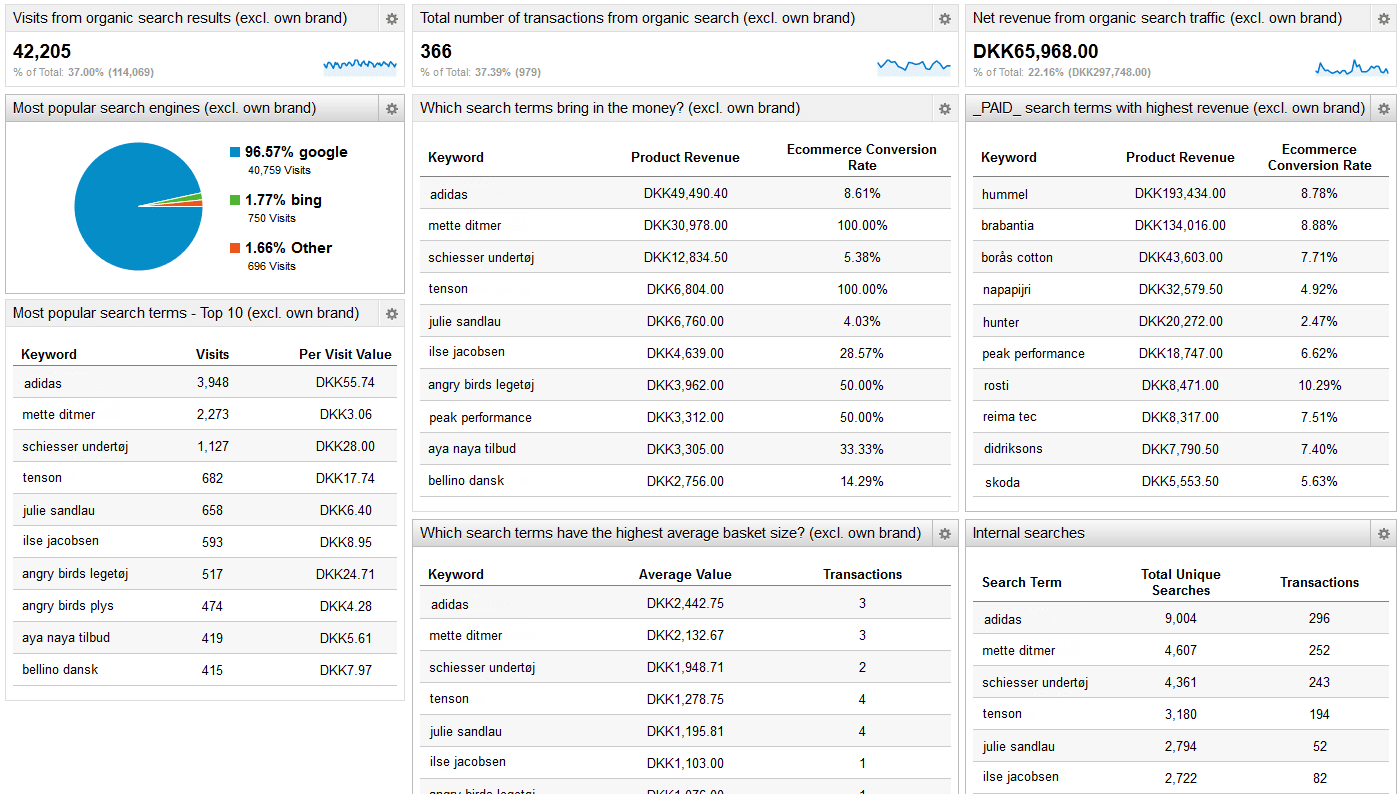
Keyword monitoring and keeping track of the backlinks of website figures are among the most monotonous tasks associated with SEO. You might have to spend a lot of your valuable time doing these boring tasks which might seem to be inane but are nevertheless a crucial component of the whole SEO strategy. However, you can manage it better with tools designed for the purpose.
SEMrush is a highly recommended SEO automation tool that can spare you several hours of tedious monitoring activities. The tool comes with a comprehensive and user-friendly dashboard that can collect and collate information in a systematic manner. You can access all the data you need from one convenient place. The dashboard collects and presents all the vital data you need for monitoring backlinks, keyword rankings, and activities related to your brand on the social channels.
3. YouTube SEO Optimization (Estimated Time Saving - 60 minutes)

If your entire focus is on improving critical business metrics such as website management and content, and if you are suddenly burdened with the additional task of YouTube SEO optimization, it can extremely frustrating. Don’t fret and worry about the problem. You can tackle it smoothly with TubeBuddy. It is an automation tool designed to deal precisely with such boring SEO tasks.
TubeBuddy is a chrome extension that can be downloaded to optimize as well as promote all the videos posted on your YouTube channel. The tool scouts through files to find topics that are trending and performing well. The input can be used for creating titles and tags that can get immediate attention from users and help you boost your search engine rankings.
You can also use TubeBuddy for A/B testing. The results can be applied to test your content and make appropriate changes for maximizing clicks on your YouTube videos.
4. Competitor Analysis Automation (Estimated Time Saving - 60 minutes)

It is not easy to carry out competitor analysis but you have to do it anyway to keep track of what your nearest competitors are up to and create appropriate responses to neutralize any advantages that they might be enjoying at your cost.
Some of the areas that need extra attention are link-building and lead generation. These are the tasks that are vital for the success of your marketing campaigns.
However, the sheer tediousness of these tasks can create a sense of complacency. There is no need to get disheartened though. You can carry out competitor analysis in a smarter and more efficient manner without losing focus on the more critical tasks on hand.
Competitor Analysis from SEMrush is one of the best tools available for the task. It helps create detailed reports that can be used for analyzing critical details such as traffic data. Competitor Analysis can be used for obtaining traffic data from any industry regardless of its location. It also allows you to get a clear idea of the most important marketing strategies of your competitors.
Besides this, you can also get information about their traffic sources, targeted audience, and lead generation sources as well.
5. Social Sharing Automation - (Estimated Time Saving - 60 minutes)

The brilliant piece of content you have created will gain in value only if it reaches the targeted audience and creates the right buzz on social channels. That’s why social sharing is a key element of digital marketing. But it can take a lot of your time if you have to work on making the content go live on the channels that matter to you the most – one piece at a time.
The best solution to this problem? Research and pick the best social media scheduling tool for automating social sharing. Buffer is a reputed brand in this regard.
This popular social media automation platform is being increasingly used by marketers to schedule posts automatically across various social media networks. It has a fantastic and highly useful ‘Posting Schedule’ feature. It allows you to share content at the time when your audience is most likely to access and read them and that too on a consistent basis.
You don’t have to keep flipping between tasks to post your content on social channels or wait for the appropriate time. Buffer does it like a boss!
6. ‘Relevant Term’ Search Automation - (Estimated Time Saving - 30 minutes)
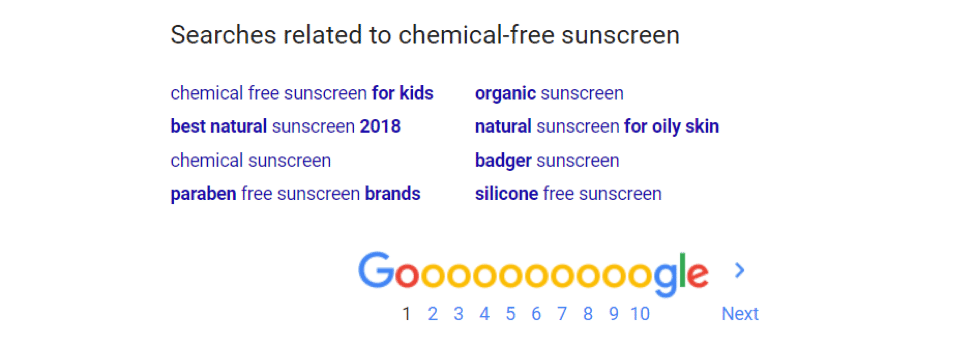
Your SEO efforts will be successful only if you write for the user. Many marketers do the terrible mistake of writing for the search engines which is certainly not recommended. If the content is valuable, the search engines will rank it is the simple mantra of SEO success.
The best way of connecting with readers is through engaging content and to create such content you must know the relevant terms that resonate with your readers. These terms help your content stand apart and can create the attention your brand needs for making an impact. You must also make sure that Google identifies these terms as relevant to your content. This will assure a good ranking on search engines.
However, finding the relevant terms is a time-consuming task and can stress your team out. It may take several hours of hard work which can affect other tasks that are of a more critical nature. The best way of dealing with the problem is to use tools to find those relevant terms.
There are many such tools available and the one that’s extremely popular among marketers is SEMrush. It is designed to help you find the most relevant terms for specific topics. The process involves using a program to see a list of related terms by entering a keyword you want to use for your content.
The list can also be sorted out on the basis of the volume of search, long-tail keywords, and the value of those keywords.
7. Looking for Backlink Opportunities (Estimated Time Saving - 120 minutes)

Choosing backlinks can be a tough task as it not only involves searching for such opportunities but also requires making a decision on accepting a specific backlink or not. There are many aspects involved in choosing backlinks for your website.
The most important thing is to know who owns and site and is involved in its running and management. The owner is the deciding authority on choosing to link back or denying the request. A lot of time needs to be invested in backlink prospects which can affect other areas of your website management process.
Searching for the right backlinks can be an extremely tedious and time-consuming task. You have to find the details of the website owner, begin communication through email, and hope for a favorable response. The worst part is that all that time spent can yield zilch results if you don’t get the desired response. That’s why marketers rely on automating the backlink search process.
One of the hot favorite tools for searching for backlink opportunities is SEMrush. It is a popular tool for finding backlink prospects. It works in an amazingly simple way too.
In Conclusion
The list of tools we have provided here is a well-researched one but it must be noted that these tools must be used smartly with your other SEO strategies to drive up website visibility and ranking. These tools can save you loads of time per week that can be used to focus more sharply on the other critical and creative areas of your SEO. Why don’t you try them out? Share your experiences with us on how much time was saved and how it made a difference to your optimization outcome.
The December 2018 ‘WhopperDetour’ campaign of Burger King got insanely famous as it allowed its app-users to buy a whopper for just a penny as long as they were in the vicinity (600m) of a McDonald’s outlet.
The campaign went on to become one of the most classic examples of geofencing and hyperlocal marketing.
Even though digital transformation has allowed brands to advertise to consumers worldwide, modern marketers are adopting the local route for reaching customers within their vicinity. Irony at its best!
So if your business is looking to zero in on your geographical area and reach more local consumers on the go, then this blog is for you.
Let us explore how you can dominate sales in your area with hyperlocal marketing.
Stats that speak a thousand words!
Wondering why every business seems to be riding the hyperlocal trend? These statistics will reveal the answer.
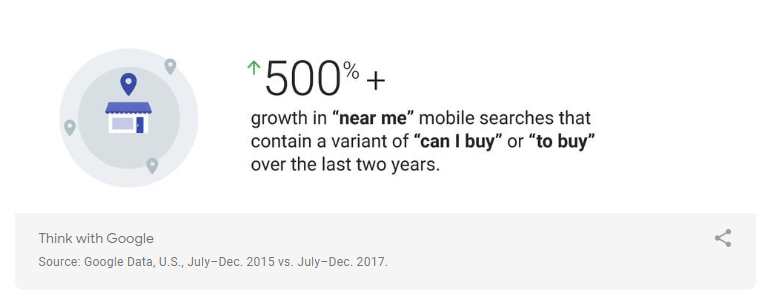
Let us take a look at another example.
If you are planning to choose an apartment and have shortlisted two of them, then having the following list will greatly influence your final choice:
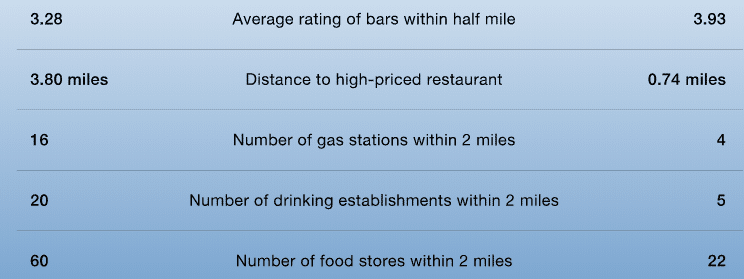
We hope that by now, you have realized how having a firm grasp over the local consumers and metrics can help you gain unprecedented business results.
So, what is hyperlocal marketing, and what are some ways to use it for increasing sales? Can ‘hyperlocal’ be utilized to deliver hyper-personalized customer experiences? And what makes hyperlocal advertising the next thing for all kinds of businesses?
Let us explore the answers to these questions in the following sections.
Let’s Start With the Basics: What is Hyperlocal?
Technically speaking, hyperlocal refers to a more localized entity. If you focus on local consumers and consumer communities and segregate them on the basis of location, age-group, profession, social media engagement, shopping preferences, and personal motivations for spending money on essentials and leisure, then you are using hyperlocal aspects for marketing and other business processes.
And, believe us when we say that it is the next thing in the modern marketing landscape!
One of the most commendable examples of hyperlocal marketing is the ‘Share a Coke’ campaign that extracted 250 most popular regional names and printed them on its bottles. The result was an immense wave of sharing personal stories and emotional moments on social media, of which the brand was a natural and vital part.

So, how can you use hyperlocal marketing for your business? Let us find out!
5 Terrific Ways to Boost Your Sales using Hyperlocal Marketing
1. Start with an impeccable Google My Business Listing
Hate it or love it, but dear Google has a lot of say in your overall hyperlocal marketing agenda. Take a look at the eye-opening stats:
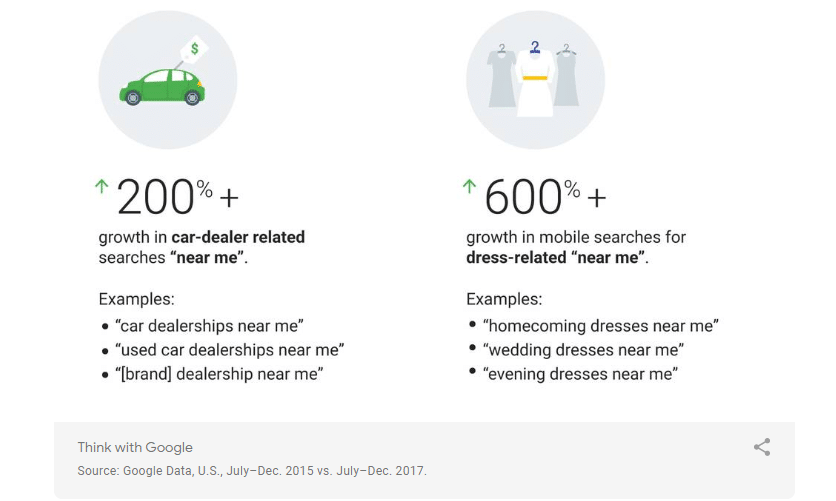
So, having an all-inclusive listing on Google My Business is Google My Business is your starting point. Write a unique business description that shows how you differ from competitors in your area and make sure to include some keywords in it. Add high definition photos, specify the work hours and working days, and have a lot of positive reviews. Respond to reviews and feedback. Acknowledge the negative ratings and respond with a suitable message indicating your action for improvement. You can also have a primary and secondary business description or product & service portfolio to give your customers a crystal clear image of your business.
Takeaway:
Having a robust online presence makes you instantly visible to your customers such that they can easily assess your services, product catalog, and quality of service via reviews. This way, you can quickly boost sales.
2. Intelligent Survey for Intelligent Personalization
Offering personalized customer experiences is one of the major reasons for hyperlocal marketing. The best way to personalize support is to conduct an intelligent survey to do a thorough pulse check among your customer masses. You can ask questions about your products, services, new releases, shopping preferences, shopping frequency, discounts, etc. You can also choose different questions for different locations for a comparative data collection.
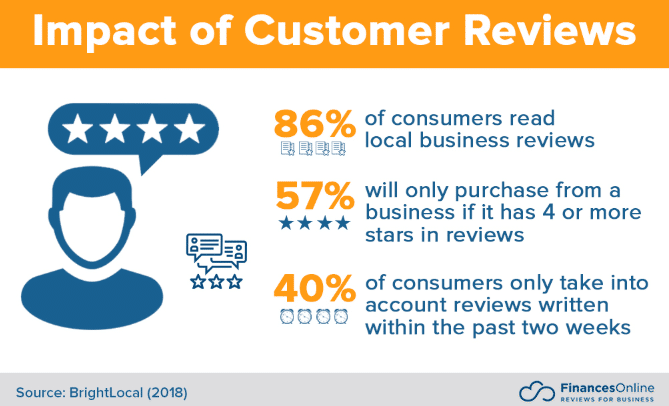
Data collected from such surveys can offer you critical digs for the personalization of customer clusters. Online Help desk tools come with excellent report generation and survey makers who can do an impeccable job. Based on these actionable insights, you can offer discounts, send newsletters, and product catalogs as per the customer interests.
Takeaway:
Invest in smart and intuitive software that can help you gather vital information about customer behavior and motivation in various geographic clusters. Using this information, you can customize or personalize your services for them and quickly boost sales.
3. Sharpening the Edges with Satisfaction Surveys
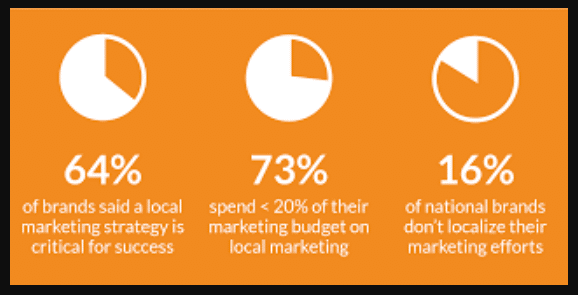
Once you have modified your service and product portfolios for the local customer clusters, you have to take the next step which is utterly crucial for the overall effectiveness of your hyperlocal marketing program - customer satisfaction surveys.
A customer satisfaction survey can help you gather reviews from the customer cluster, and then revise your marketing strategy as per the results. Such surveys can help you understand customer behavior towards personalized and localized services, but they can also help you understand exit intent, unsubscription reasons, etc. Consistent modification in personalized experiences for the geographically segregated customer clusters is an ingenious way to boost sales.
Satisfaction surveys also help you improve your ‘near me now’ ranking, which is yet another deciding factor behind hyperlocal marketing success.
Take a look at the latest trends for near-me-now ranking.
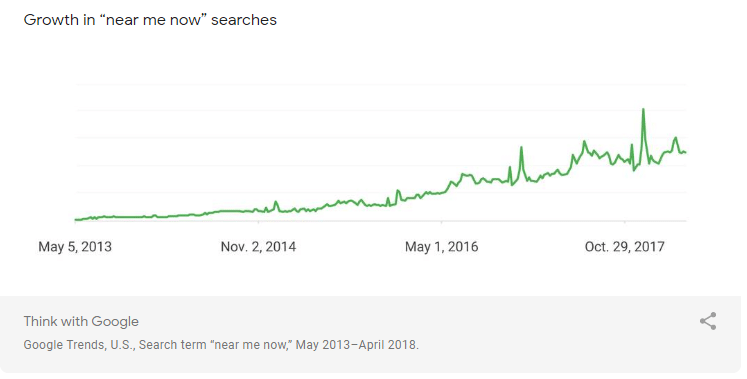
Takeaway:
Acing your hyperlocal strategy game requires consistent and thorough pulse-check of consumer clusters for which customer satisfaction surveys can offer fantastic data. Dig through this data, use AI and ML-based automation to uncover hidden patterns in it, and make sure to utilize it for finalizing your next marketing strategy. This is a brilliant way to create hyperlocal content that boosts your sales.
[insert page='why-semrush-content-marketing-platform-is-your-best-bet-for-your-content-marketing-needs' display='single-related-article.php']
4. Segregate your Presence
If you have a business presence at different locations, make sure each of them has a separate landing page specially tailored for the customer cluster of that location. For example, all the major brands such as Pizza Hut, etc, have one main global website. Still, the national and regional web pages are tailored for the specific audience. Still, the national and regional web pages are tailored for the specific audience. Menus, background images, news, promotional offers, discounts, and special meals - everything is tailored for an impeccable personalized experience.
For example, take a look at the following customer clusters:
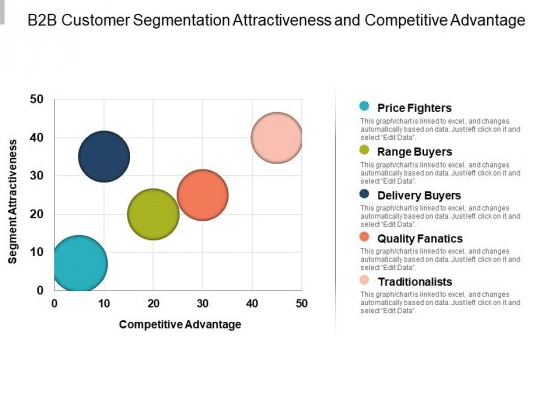
All these customer clusters will visit your website with a different intent and will expect your website to give an impression of catering to that intent. Hence, having a brand presence that your customer clusters can relate-to is a must.
Takeaway:
To make hyperlocal marketing strategy a success, you must have a distinct and well-tailored brand presence and brand image for different customer clusters. This can be done on various parameters, such as location, age-group, profession, service, and purchase intent, etc.
5. Local Insights that are Actionable
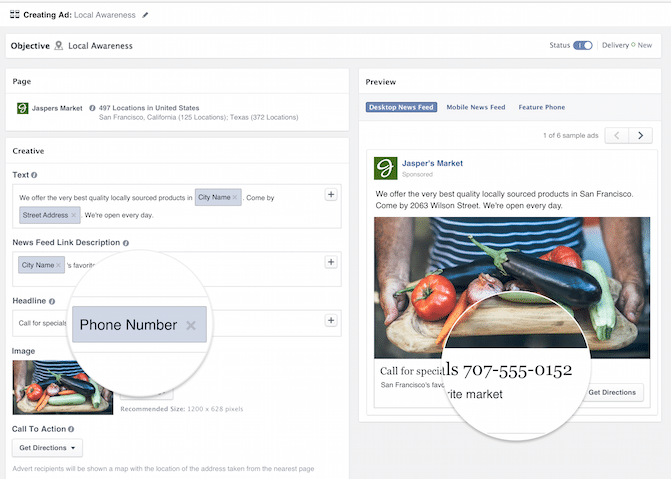
Social media engagement and millennial customer base - these two terms govern a major part of hyperlocal campaigns in general. Powerful insights such as Local Insights from Facebook can be of immense value in this regard. These local insights can show you whether the right people in the right place are witnessing the right marketing content at the right time or not.
As these stats cater to all the verticals of a fool-proof hyperlocal marketing strategy, they can help you in the best possible manner. What makes them a reliable source to boost sales, is the fact that they are actionable. You can find exact numbers, figure out exact trends, and modify or improve your marketing campaigns accordingly. Facebook Local Awareness Ads are yet another powerful tool that can help you improve local marketing.
Takeaway:
Local Awareness Ads and Local Insights can offer you the best impressions about your local customers. They can also help you in deciding the credibility and efficacy of your local marketing campaigns.
Brands Using Hyperlocal Marketing - A Brilliant Example to Follow
Loacker is a reputed Italian company specializing in cream wafers and chocolate. To cater to the millennial foodies’ cluster, the brand opted for in-store marketing and refined the products as per the local taste preferences, i.e. lemon for the East Coast, and dark chocolate for the West Coast. The brand also worked in association with Zulily for limited-run campaigns such as the back-to-school campaign in which a free product was put in every shipment box of Zulily.
This is an excellent way to cater to segregated customer clusters where segregation is done based on different criteria.
Take a look at the diagrammatic representation of various customer segmentation parameters.
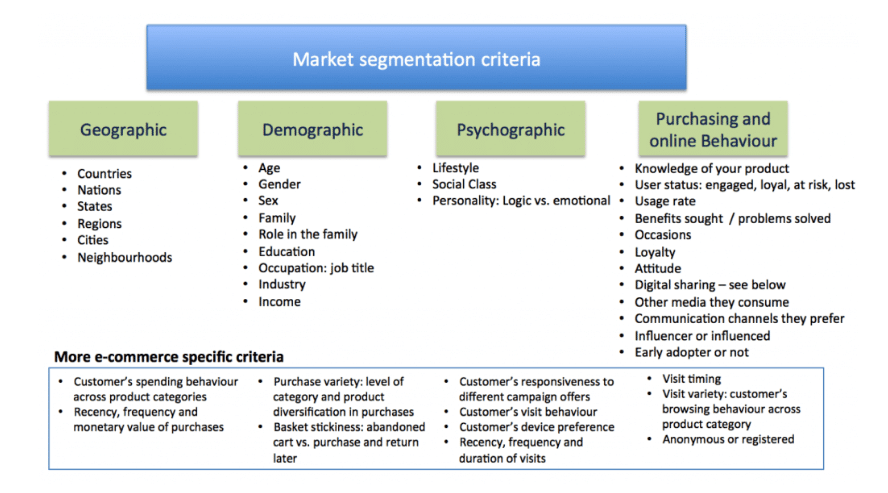
Still Thinking Global? Start Thinking Local
Offering highly personalized customer experiences is a sure-shot way of achieving excellence in customer service, which translates to better sales, better revenues, and a future-ready business model. Customer support is very important key for any business, so choosing best customer service for business And, hyperlocal marketing does an impeccable job to make your business perfectly able to do so. If you are still thinking global, start thinking local and give your business the right pair of wings to fly.
We hope these strategies offer thoughtful takeaways to the readers and help them take the first step towards being a hyperlocal brand.
Thanks for reading!

